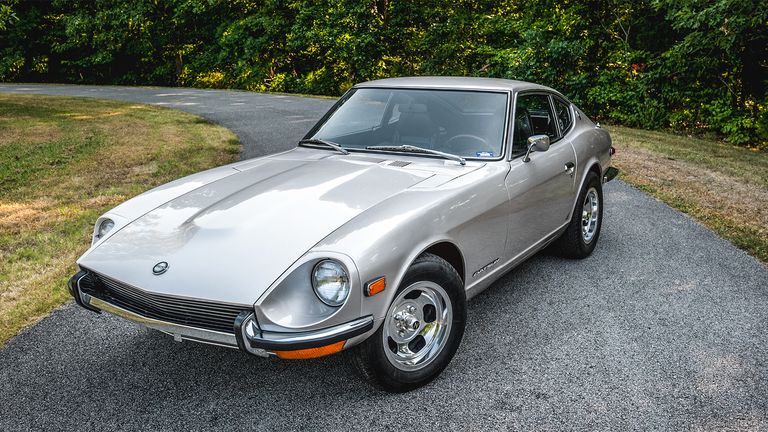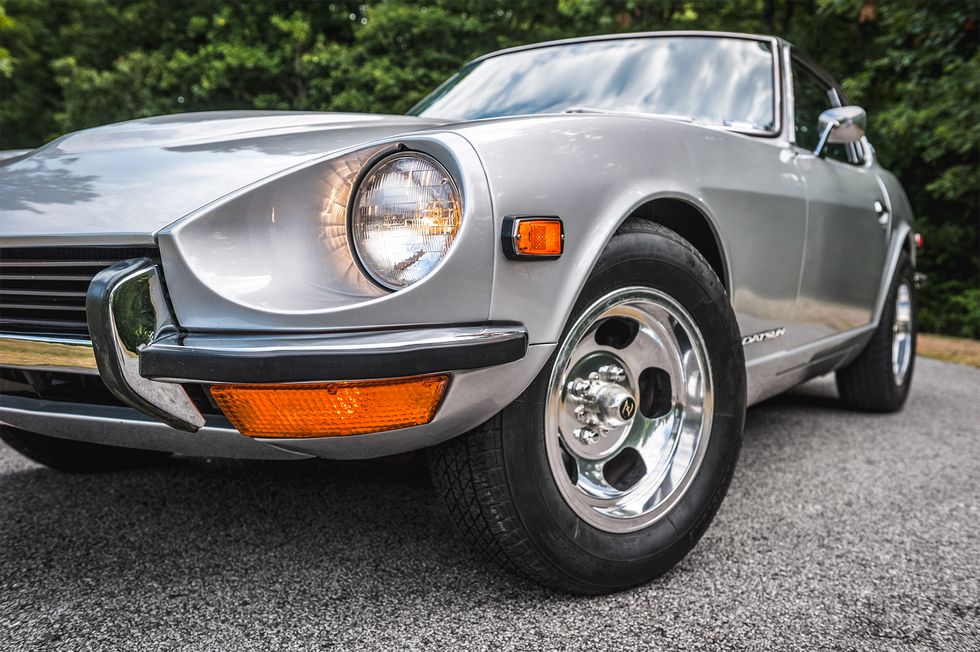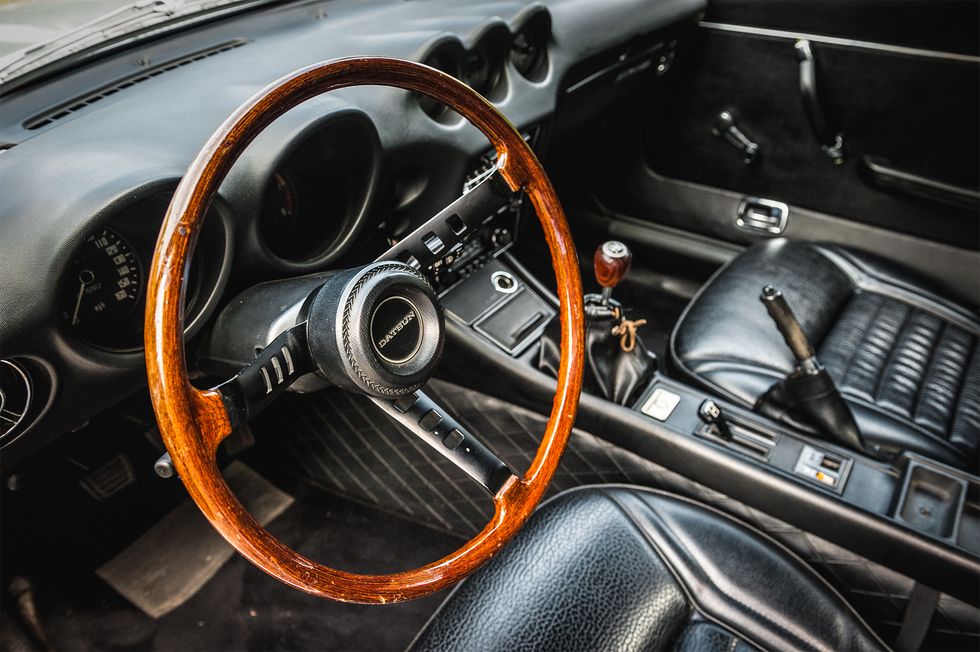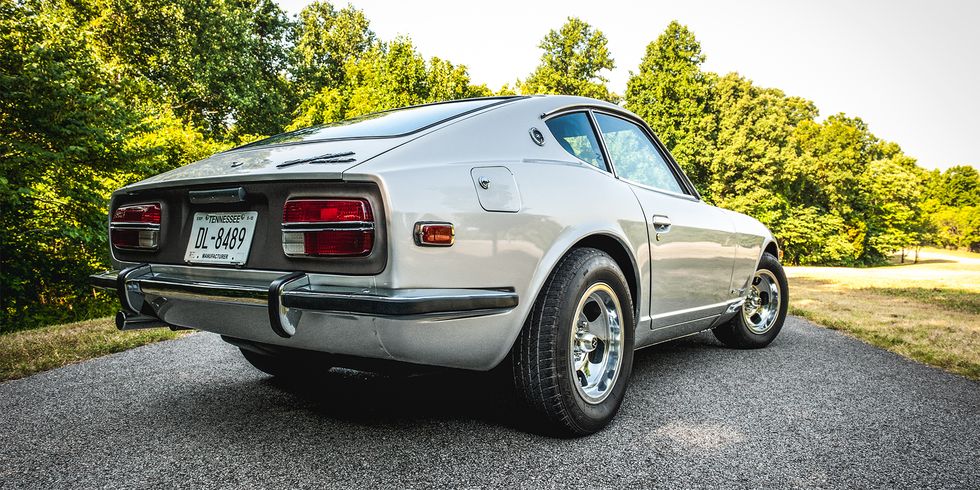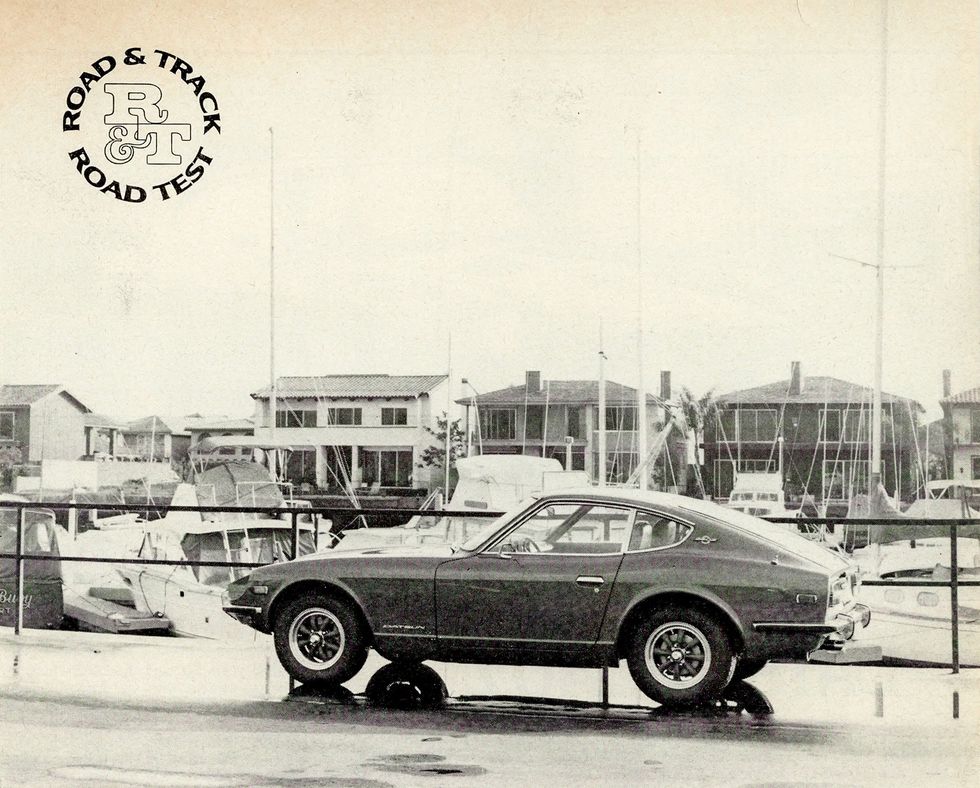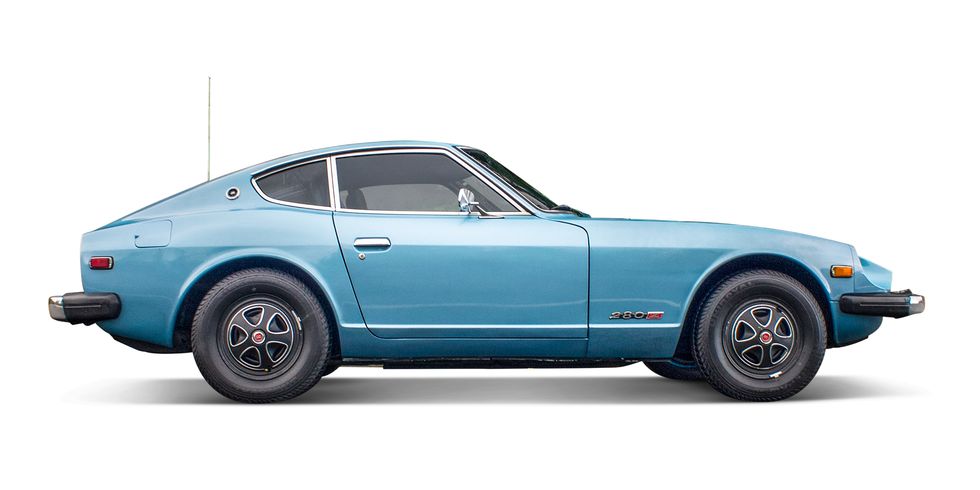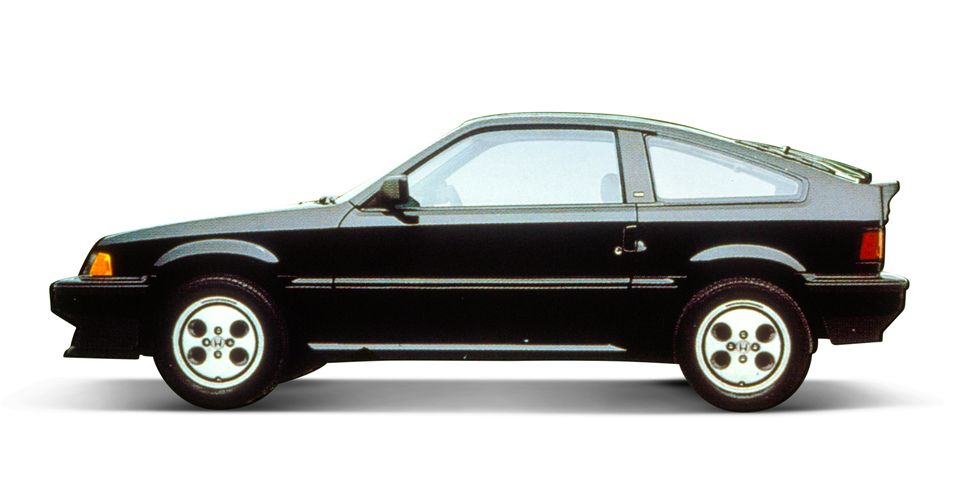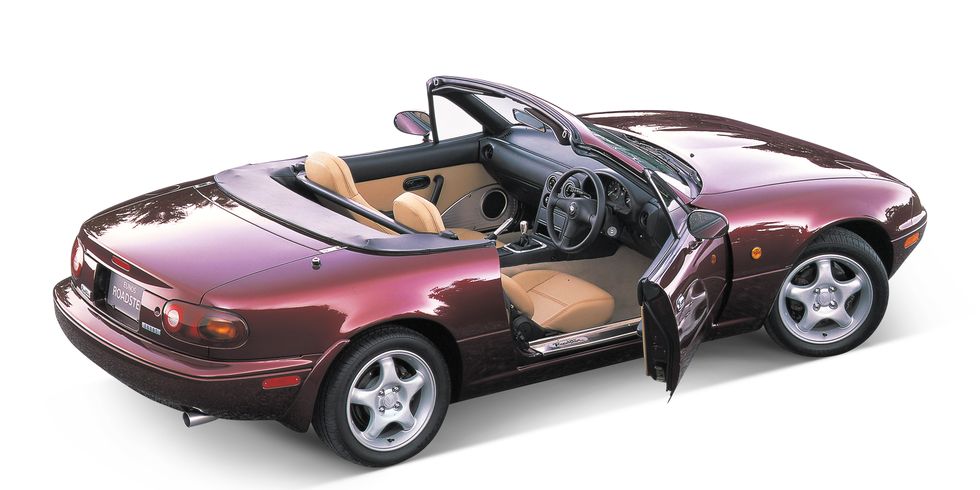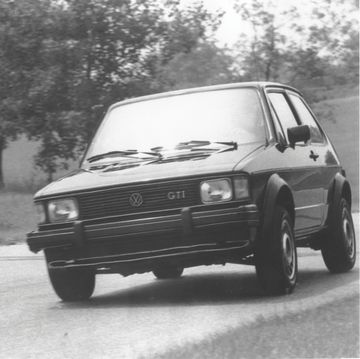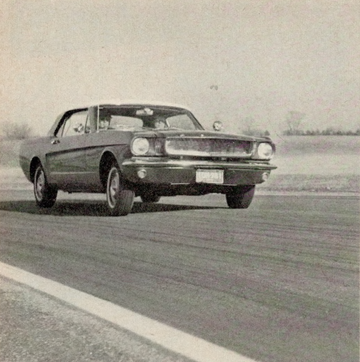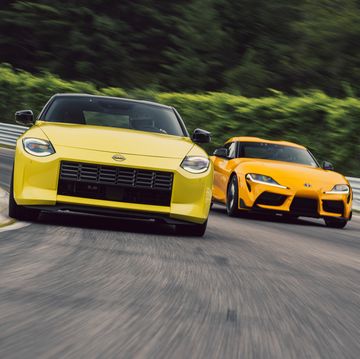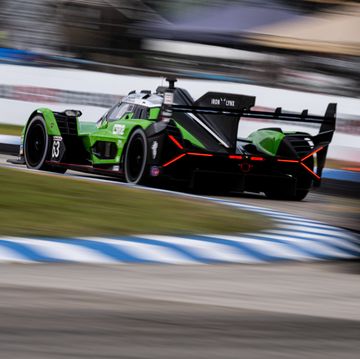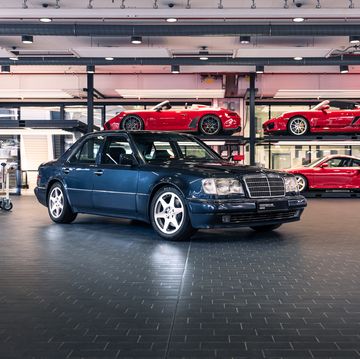What could a Japanese automaker possibly know about building a proper GT car? It was a fair question in the 1960s, when the British, Germans, and Italians controlled the sports-car market, and the Japanese, with a few notable exceptions, built economy compacts. But on October 22, 1969, Datsun unleashed the 240Z: a smooth straight-six with dual carbs and 150 hp, a four-speed manual, four-wheel independent suspension, a curb weight around 2350 pounds, and seductive styling that would have made it attractive at any price. For $3526, about the same as a 92-hp MGB GT and some $2000 less than a Jaguar E-type, it was a revelation. Turns out, Japan knew a hell of a lot about building GT cars. No surprise, the Z is now leading the surge of rising values for Japanese collector cars.
THE EXPERIENCE
Pull the choke lever between the seats, crank the starter, and go. It’s like a British car, but with a much higher probability of everything working. The 2.4-liter engine is internal-combustion marriage material—torquey and wonderful-sounding, as you’d expect of six tiny cylinders in a row. It’s also indestructible. And for anybody accustomed to an old Moss gearbox in a British car, the Datsun transmission is fantastic—it works flawlessly and doesn’t sound like it’s ingesting parts. The Z handles predictably and is eminently tossable, provided it’s riding on anything close to the original, skinny, 14-inch tires. A 240Z doesn’t necessarily excel at any one thing, dynamically, but it does everything well. It was and is a giant killer, the everyman’s E-type. And, in its own right, one of the most entertaining sports cars of all time. Let’s not forget those looks, either—as good as any exotic GT car of its day and perhaps any since. ones. That said, they offer a very similar driving experience. (The later 260Z and 280Z cars draw another parallel to Series 2 and 3 E-types.)
THE ONE YOU WANT
The Datsun’s comparison to the Jaguar E-type also holds on the collector market. The most valuable E-types are the 1961–1967 Series 1 cars. Of these S1 Jaguars, the first few hundred cars are valued much higher, due to unique features like external bonnet latches and “flat” floors. So it goes with 240Zs: The first 500 or so cars are unique in many details, extremely difficult to restore properly, due to original early-production parts being unobtainable. The balance of the Datsun Series 1 cars, built through the middle of 1971, are the second most valuable. All Series 1 cars are identifiable by the two external vents on the rear liftgate under the window and chrome “240Z” badges on the rear sail panels.
The Series 2 cars had several changes, including a revised interior. The 1973 models are the least collectible, mostly due to their increased emissions controls; the now-dreaded and oft-tossed “flat tops” carburetors replaced the earlier “round tops” ones. That said, they offer a very similar driving experience. (The later 260Z and 280Z cars draw another parallel to Series 2 and 3 E-types.)
SO, WHAT ARE THEY WORTH?
A lot more than they used to be. About 10 years ago, I bought the finest original Series 1 car I had ever seen—low miles, flawless original paint, and an interior and chassis you could eat off. It wasn’t one of the first 500, but it was a very early production car. I paid $15,000, probably a record price at the time. I enjoyed the car for a few years and sold it for $25,000. That buyer later sold it for $40,000. Today, the same car is likely worth closer to $75,000. The best low-VIN cars are now, in a few cases, selling for close to six figures. I suspect they will continue to climb. Keep in mind, these are prices for the best-of-the-breed cars—bone-stock with squeaky-clean histories. The median price for a very nice “driver” 240Z is still in the low-to-mid-$20,000 range, with rust buckets and hot-rodded ones being far less. The biggest bang for the buck is a Series 2 240Z in clean, close-to-stock condition. A rising tide lifts all boats, so as the early Series 1 cars continue to appreciate, the Series 2 cars are following.
WHAT TO AVOID, AND WHAT TO DO
Rust is the Achilles’ heel for these cars, but accident damage and negligent previous owners are also on that podium. Datsun sold 148,115 240Zs in the United States, but they were “cheap” sports cars for a long time, and many fell into uncaring or incapable hands. So, finding a good Z can be a challenge. But they are out there. The more correct the car, the better off you are. For those so inclined, it’s easytowakeupaZcar.Its rigid unibody and robust mechanicals—key contributors to the car’s racing successes—make it very receptive to performance tuning. If you want to get invasive, the L24 engine responds well to traditional hot-rodding techniques. A hotter camshaft, cylinder-head work, and the ever-popular increase in displacement yield tremendous gains in power.
Trim, interior, and service parts are all readily available and reasonably priced. If you find yourself with the interior out of a Z car, do yourself a favor and load up the inside of any accessible panels with sound deadening such as Dynamat—it makes a huge difference in minimizing the “tinny” sound of the Z’s unibody, especially when you shut the long, resonant doors. Also make sure to spray in a good nonhardening rust-preventative product such as Fluid Film or Boeshield to keep the tin worm at bay.
Given proper sorting and tuning, a 240Z offers what many collectible cars do not: near-modern driving dynamics, practicality, and reliability. In this sense, at least, it surely does not compare with an E-type.
FROM THE ROAD & TRACK ARCHIVES
April 1970 | THE MOST EXCITING NEW GT CAR IN A DECADE
There are several obvious influences on the 240Z, among them the Jaguar E-type coupe, the Toyota 2000 GT, the Porsche 911 series, and even the Ferrari 275 GTB. . . . Inside the car, the driver and passenger are immediately impressed by a very modern layout, which would seem almost Corvette-like if it weren’t more tastefully done in black vinyl...
“For one interested in the business of driving, this simplicity is satisfyingly functional. The seats and the positions of all the controls are equally right. . . . Acceleration is better than that of any other GT in its price class, and along with the styling, this will be a major selling point. Getting off the line is smooth, with only moderate wheelspin. Gearing is intentionally tall, to give the 240Z good cruising performance and a high top speed (we got 122 mph at 5800 rpm), but means that there is a definite lack of snap when trying to accelerate from a low engine speed in fourth or even third. The gearbox has a nice action, with good short throws, but the synchromesh was all too easy to beat, especially in second. . . .
“Handling is very good and roadholding really excellent. On the skidpad, we recorded 33.0 mph, equal to 0.728 g. This is just a hair better than the speed achieved by the Porsche 914! The Datsun can really be driven hard; flung enthusiastically into corners, its near-neutral handling (helped by the near 50/50 weight distribution) makes it very stable, with just a hint of oversteer allowing the tail to hang out but not come around. Ride is far better than on previous Datsun sports cars but still quite abrupt on choppy surfaces; it would seem that Nissan eniineers still have something to learn about shock absorbers. . . .
“At this price it is a super bargain, with a combination of styling, performance, and handling far ahead of anything else under $4000. . . . The Japanese industry is no longer borrowing anything from other nations. In fact, a great struggle may be ahead just to prevent a complete reversal of that cliché.”
ALTERNATIVES
So, you missed out on the 240Z when the price of admission suited your sensibilities. Fear not. Here are my recommendations for other rising stars from the Land of the Rising Sun.
1974–1978 Datsun 260Z and 280Z ($5500–$18,000)
Obvious, yes, but worth keeping in mind. Later Zs got bigger and heavier and lost some of the looks and performance. But they still have most of the attributes of the early cars, and they cost half as much, if that. Plus with the option of four seats, they offer even more practicality.
1985–1987 Honda CRX si ($8500–$15,000)
They are front-wheel drive, but think about it: two seats, lightweight, reliable, and more fun than you can imagine.Also saw success in racing. Produced in huge numbers, but immaculate stock examples are nearly extinct. Sound familiar? Now’s the time to buy.
1989–1997 Mazda Miata ($8500–$15,000, mint)
A sensation when introduced, with the same kind of supply, demand, and price-gouging issues that the 240Z saw in its day. And the seemingly inexhaustible supply is being thinned by com- petition use and simple idiocy. My money is on an early, bone- stock, mint example. —CC
